Don't just say stupa to a chedi
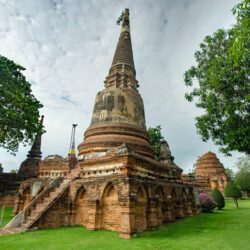
You simply cannot miss it in Thailand; the chedis, the local variant of what is known in the rest of the world - with the exception of Tibet (chorten), Sri Lanka (dagaba) or Indonesia (candi), as the stupas, the round structures containing Buddhist relics or, as in some cases also the cremated remains of the Great Ones of the Land and their relatives.
Phra Mae Thoranee: the revered Earth Goddess
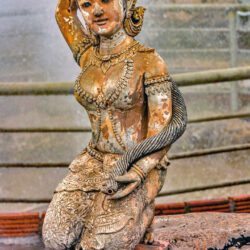
Phra Mae Thoranee or Nang Thoranee, the earth goddess of Theravada Buddhist mythology. She is worshiped and revered in Myanmar, Thailand, Cambodia, Laos and Sipsong Panna in Yunnan. In Thailand, she is a source of worship, especially in Isan, in the Northeast of Thailand.
The Thai National & Other Libraries
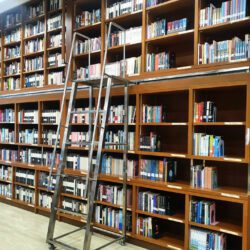
It all started in the seventh century BC with the thousands of clay tablets of King Ashurbanipal in Nineveh. A collection of texts that was systematically arranged and catalogued and it has continued in this way for twenty-eight centuries, albeit with trial and error. So the oldest library was that of good old Assurbanipal, the youngest newcomer is the internet.
And that's where the gold diggers show up again!
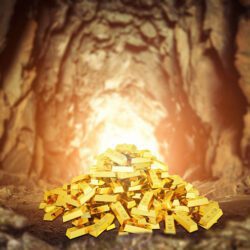
I have previously written on Thailandblog about the Thai version of the Loch Ness Monster; a persistent myth that pops up with the regularity of a clock. Although in this specific case it is not about a prehistoric aquatic creature, but about an even more imaginative enormous treasure that the retreating Japanese troops are said to have buried near the infamous Burma-Thai Railway at the end of the Second World War.
The unknown Railway of Death
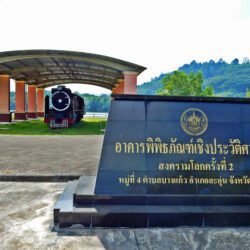
Lung Jan has been working for a few years on a book in which he tries to reconstruct the almost forgotten story of the romusha. Romusha was the collective name for the voluntary and forced Asian laborers who were employed by the Japanese occupier in the construction and maintenance of the Thai-Burma railway, which soon and quite rightly became known, or rather, infamous, as the infamous Railway of Death, the Railway of Death….
Wat Saphan Hin is worth a steep climb…
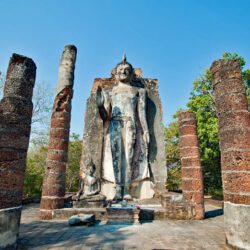
God.. how I sweated that day… On a beautiful spring day in 2014, I set out on one of the bicycles, painted in a striking Barbie pink, that the Tharaburi Resort made available to guests, to what is known as the Western Zone from the Sukhothai Historical Park.
About a watchful dog and a sleeping princess
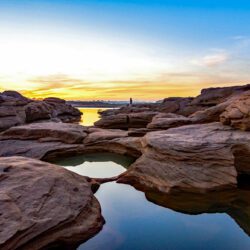
In many mythical places in Thailand one can find strange, often fabulous rock formations that stimulate the imagination. A large number of these bizarre, strange phenomena can be discovered in Sam Phan Bok, which is also - and in my opinion not entirely wrong - called the Grand Canyon of Thailand.
Weird squiggles and pigtails: the origins of Thai script
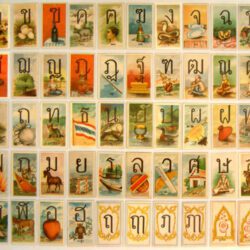
I must confess something: I speak a fair bit of Thai and, as a resident of Isaan, I now also - necessarily - have notions of Lao and Khmer. However, I never had the energy to learn to read and write Thai. Maybe I'm too lazy and who knows - if I have a lot of free time - maybe it will one day, but so far this job has always been put off for me... It also seems so damn difficult with all those weird twists and pigtails…
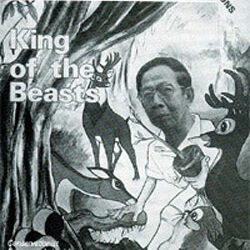
Boonsong Lekagul was born on December 15, 1907 into an ethnic Sino-Thai family in Songkhla, southern Thailand. He turned out to be a very intelligent and inquisitive boy in the local Public School and consequently went to study medicine at the prestigious Chulalongkorn University in Bangkok. After graduating cum laude as a doctor there in 1933, he started a group practice together with a number of other young specialists, from which the first outpatient clinic in Bangkok would emerge two years later.
Wat Chang Lom, an outsider in Sukhothai
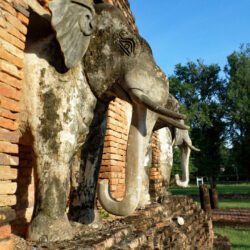
Wat Chang Lom is part of the immensely large Sukhothai Historical Park, but is outside the most visited and very touristy part. I had already explored the Historical Park at least three times before discovering this temple ruin by chance on a bike ride from the resort where I was staying.
Lampang is more than just Wat Phra That Lampang Luang
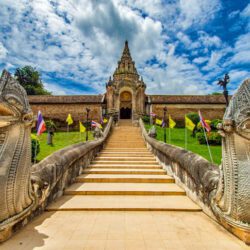
Lampang was an important city in the northern principality of Lanna for centuries. Nestled on the banks of the Wang River, between the Khun Tan Hills to the west and the Phi Pan Nam Hills to the east, Lampang was at the strategically important intersection of the roads connecting Kamphaeng Phet and Phitsanulok to Chiang Mai and Chiang Rai.
The Ayutthaya of the 'ordinary' man (and of course also woman)
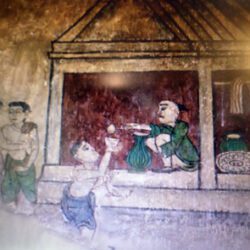
A huge problem for anyone trying to understand the history of Thailand is that historiography or historiography has been monopolized for more than two centuries and to this day by the Thai elite in general and the monarchy in particular. They and they alone have made the country what it is. Anyone who dares to question this theory is a heretic.
Book review: The Kings of Ayutthaya
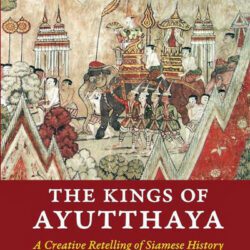
Anyone who wants to do serious historical research with regard to Siam is confronted with the same problem. When the Burmese destroyed the Siamese capital Ayutthaya in 1767, the country's archives and most important libraries also went up in flames. This makes it damn hard to correctly reconstruct, let alone interpret, the history of Siam before 1767.
A Thai in the German Wehrmacht
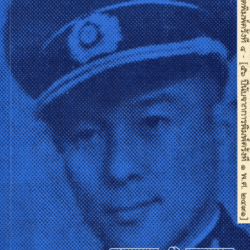
For years I have been looking for a book that can shed light on one of the most intriguing pages of Thailand's World War II history. The cover features a photo of a German Wehrmacht officer with unmistakable Asian facial features. This book contains the memoirs of Wicha Thitwat (1917-1977), a Thai who had served in the ranks of the German Wehrmacht during this conflict.
Hendrick Indijck: The first Dutchman in Angkor Wat
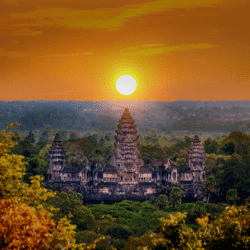
One of the men who risked their lives for the VOC was Hendrik Indijck. It is not clear when exactly he was born, but it is true: according to most historians, this happened around 1615 in Alkmaar. Indijck was a literate and adventurous man.
Relics of the Srivija Empire in Surat Thani
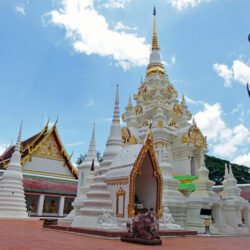
I really like the traces left by the Khmer civilization in Thailand, but that doesn't mean I close my eyes to all the other beautiful heritage that can be found in this country. In the Chaiya district of Surat Thani, for example, there are a number of special relics that testify to the influence of the Indonesian Srivija empire on the south of what is now Thailand.
Wat Mahatat, the jewel in the crown of Sukhothai
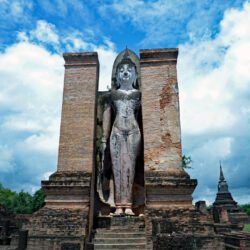
In recent months on this blog I have regularly reflected on the Sukhothai Historical Park, which is littered with important cultural-historical relics. Of course Wat Mahatat should not be missing in a series of contributions on this site.






